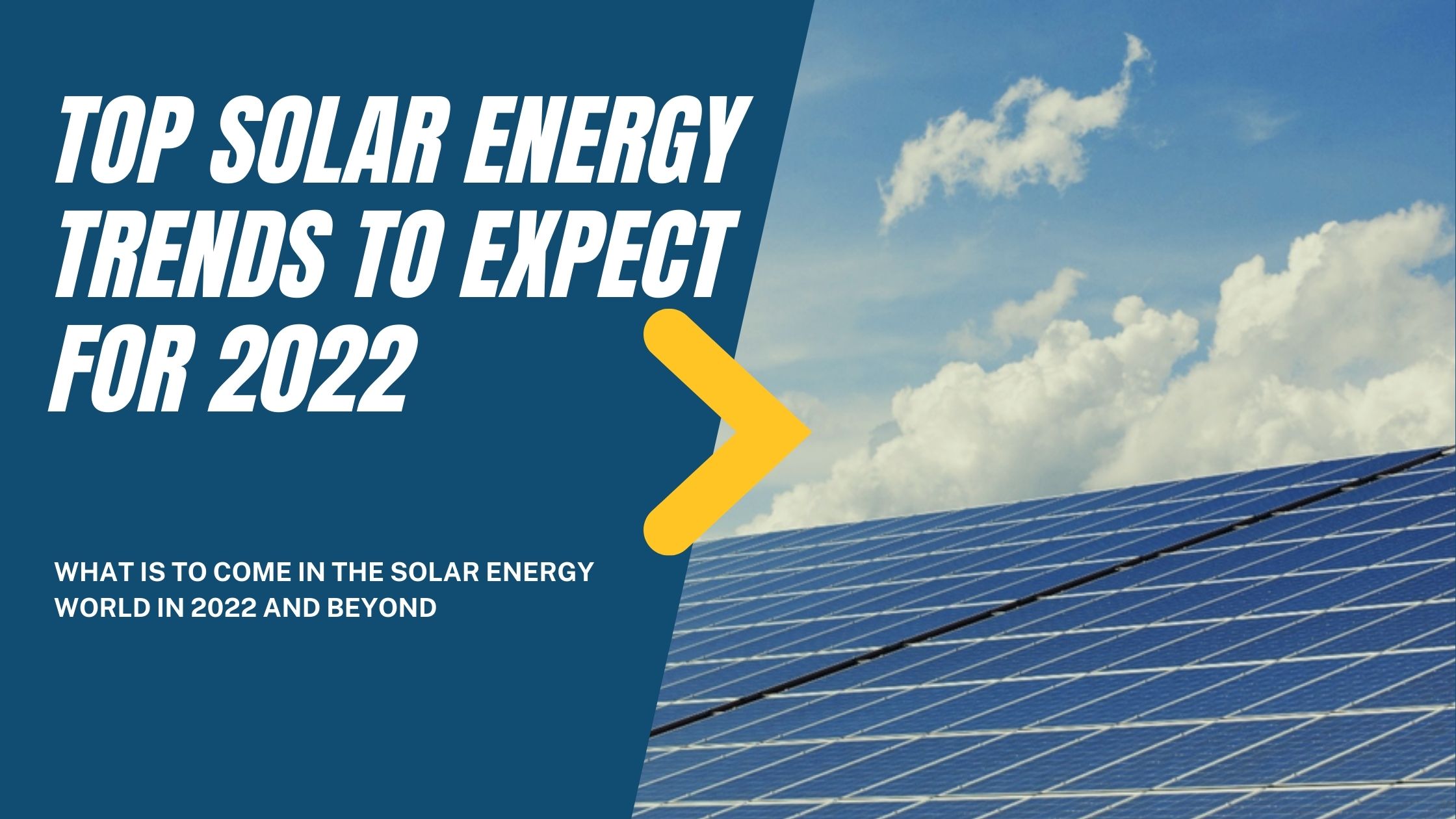


While global events have handicapped many industries over the past couple of years, solar power is one area that’s continued to go from strength to strength. With continued innovation in the application of solar technology—and, of course, falling costs—solar power has managed to endure the pandemic better than most, but what can we expect going forward.
As 2022 comes racing towards us, we wanted to cast our minds ahead and look at what the near future has in store for solar energy.
As with most technologies, the cost of creating—and subsequently buying—solar technologies has continued to fall as more and more customers are adopting them. This trend is exponential and cyclical, with the mass adoption of solar technology driving prices down, leading to more businesses adopting solar technology and thus repeating the cycle.
This trend will continue strong into 2022. The demand for solar is more than sufficient to ensure continued research and development. Market forces, such as competition between providers, will be significant factors in the cost of solar for the foreseeable future. Solar will also continue to offer tax credits for the foreseeable future in the US.
Governments worldwide are increasingly aware of the risk our legacy energy production methods pose to the environment, and with continued commitments to cut down on carbon emissions, subsidies on things like solar power are set to be around for a long time.
And, as the pressure to go greener increases, more businesses and other consumers will look to take advantage of various government schemes, tax breaks, and other subsidies.
Another aspect of continued market demand and the development it drives is the reliability of the technology in question. Early solar technologies were not necessarily as robust as they needed to be and certainly not as effective.
With continued development, solar technology’s durability and effectiveness will continue to improve, making them a more attractive proposition. This improvement is significant for larger businesses, where ongoing maintenance costs can be substantial compared to smaller installations. And, of course, any increase in sales as a result of these improvements will only feed into the above point about sales growth leading to lower costs, which in turn leads to more sales.
Solar technology does not exist in a vacuum. While there are undoubtedly solar products that an average consumer can purchase and use with no expert knowledge, solar installations are a different ball game. This is even more true for solar in business installations.
As the demand for solar increases, so too does the demand for professionals who can install, repair, and maintain solar installations.
As solar technology becomes more reliable and robust, it finds its way into a broader range of products. Solar lighting most readily springs to mind, from outdoor lights for ornamental purposes to full commercial solar lighting arrangements. Increasingly, however, new standalone solar systems are being brought to market, such as solar electric vehicle chargers.
In the coming year, the demand for new solar products will continue to grow, leading to more products and systems incorporating solar in a way that operates independently of any larger solar energy installation.
It’s hard not to be aware of the growing concern around the climate these days. The push for cleaner and renewable energy is palpable, and solar is at the forefront of that push. Unfortunately, the climate crisis isn’t going away, and neither is the desire to introduce as much green energy as possible.
As probably the most consumer-friendly and heavily developed renewable energy technology, businesses and consumers will increasingly turn to solar, whether out of a genuine desire to help the environment or just from social and corporate pressure to take steps in that direction.
As the cost of solar technology continues to come down, the benefits in larger infrastructure become more apparent. For example, solar lighting is now a far more efficient and cost-effective way to light large areas, such as parking lots and industrial complexes, than the traditional method of running electrical wires in the ground.
As options like this expand and the costs lower, we will start to see more solar used in large infrastructure projects, bringing the running costs down and reducing the need for disruptive installation processes.
Solar energy has come along in leaps and bounds over the past few years, and the trends we are likely to see over the coming year do not look likely to slow down as 2023 approaches. And, with the increased durability and lowering costs of solar technologies, the larger projects—the projects that are predicted to take several years to complete and have the potential to change the way we think of energy production—will start to come to fruition.
One thing is clear, whether you are an environmentally conscious business or just looking for cost-cutting solutions to balance the books, solar is going to be hard to say no to in the coming years.
Author Bio: This article was written by Eloise Tobler of Wisetek. Wisetek is a global leader in IT Asset Disposition, Data Destruction, & IT Reuse.
